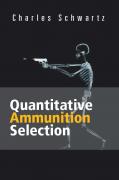Test Gun: S&W M442
Barrel length: 1 7/8 inches.
Ammunition: Speer .38 Spl 135gr Gold Dot +P (53925)
Test media: 10% Vyse Ballistics Gel
Distance: 10 feet.
Chronograph: Caldwell Ballistic Precision Chronograph G2.
Five shot velocity average: 848fps
BB Calibration: 4 inches.
https://general-cartridge.com/2022/0...allistics-gel/





 Reply With Quote
Reply With Quote

